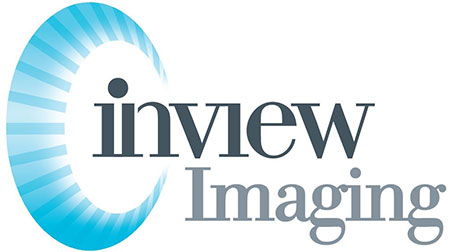-
Enabling Real-Time Guidance for Minimally Invasive Procedures
-
Revolutionizing Ophthalmology with Detailed Eye Examinations
-
Providing Detailed Imaging for Small Parts like Thyroid, Testes, and Glands
Welcome to a journey through the realm of high-resolution color Doppler ultrasound technology and musculoskeletal sonography. In this listicle, we delve into its benefits, applications in medicine, radiology, MRI, and how it revolutionizes diagnostic imaging. Prepare to be amazed by the intricacies and capabilities of this cutting-edge medical machine.
Discover how high resolution color Doppler ultrasound, radiology enhances accuracy in diagnosing conditions, aids in monitoring treatment progress, and provides detailed insights into vascular health. From obstetrics to cardiology, radiology and MRI offer a non-invasive window into the human body like never before. Stay tuned as we unveil the top picks for high resolution color Doppler ultrasound machines that are making waves in healthcare today.
Enhancing Diagnostic Accuracy for Cardiovascular Diseases
High resolution color Doppler ultrasound plays a pivotal role in cardiology by providing detailed images of blood flow within the heart and blood vessels. This technology allows for precise visualization, aiding in the detection of blockages and abnormalities that may go unnoticed with traditional imaging methods.
By utilizing high resolution color Doppler ultrasound and transducer, healthcare professionals can accurately diagnose various cardiovascular conditions such as atherosclerosis, heart valve disorders, and congenital heart defects. The enhanced spatial resolution offered by this technique enables better identification of issues like stenosis or abnormal myocardial velocities.

One significant advantage of high resolution color Doppler ultrasound is its ability to capture high velocities accurately without aliasing, ensuring reliable data for diagnostic purposes. This advanced imaging modality not only increases the amount of information available but also improves the quality of images produced during echocardiography exams.
Boosting Vascular Imaging for Peripheral Artery Disease
High resolution color Doppler ultrasound is a powerful tool for enhancing vascular imaging in cases of peripheral artery disease. By utilizing radiology and MRI technology, healthcare providers can obtain detailed images of blood vessels, aiding in both the diagnosis and ongoing monitoring of this condition.
This advanced MRI imaging technique offers improved visualization of blood flow within the peripheral arteries. Through color Doppler ultrasound, medical professionals in radiology can identify any abnormalities or restrictions in blood flow, providing crucial insights into the health status of these vital vascular structures.
One significant advantage of high resolution color Doppler ultrasound is its ability to facilitate early detection of narrowed or blocked arteries in various parts of the body, including the arms and legs. This early identification allows for prompt intervention and management strategies, potentially preventing further complications associated with peripheral artery disease.
Improving Breast Cancer Detection and Monitoring
High resolution color Doppler ultrasound, radiology, and MRI play a crucial role in the early detection of breast cancer. By identifying suspicious lesions accurately, radiology technology aids in guiding biopsies for precise diagnosis. Moreover, MRI offers enhanced visualization of blood flow patterns within breast tumors, providing valuable insights into tumor characteristics.
Regular monitoring of tumor response to treatment is another significant advantage offered by high-resolution color Doppler ultrasound. This monitoring enables healthcare professionals in radiology to track changes in the tumor’s vascularization over time using MRI, allowing for timely adjustments to treatment plans.
For women undergoing breast cancer treatment, the ability to measure and analyze blood flow within tumors using this advanced imaging technique (MRI) can be instrumental in assessing treatment efficacy and disease progression. Through continuous monitoring with high resolution color Doppler ultrasound in radiology, medical professionals can make informed decisions regarding patient care based on real-time data and observations.
Facilitating Early Detection of Fetal Abnormalities
High resolution color Doppler ultrasound plays a crucial role in the early detection of fetal abnormalities during pregnancy. This advanced technology enables healthcare providers to conduct a detailed assessment of blood flow in critical areas such as the umbilical cord, placenta, and fetal organs.
By utilizing high resolution color Doppler ultrasound in radiology, medical professionals can achieve improved accuracy in diagnosing conditions like fetal growth restriction and congenital heart defects. This level of precision allows for timely interventions in medicine and radiology to be implemented promptly.
Furthermore, this diagnostic sonography technique enhances the ability to monitor fetal development closely throughout early pregnancy stages. It provides valuable insights into potential issues that may impact the health and well-being of both the mother and the developing fetus.
Advancing Musculoskeletal Injury Assessment
High resolution color Doppler ultrasound plays a crucial role in assessing musculoskeletal injuries, particularly soft tissue damage like muscle tears and ligament injuries. MRI This imaging technique offers improved visualization of blood flow within the affected muscles, tendons, and joints. By utilizing high resolution color Doppler ultrasound, healthcare professionals can accurately monitor healing progress and evaluate the effectiveness of treatments.
-
Enhanced Evaluation: The use of this technology enables detailed examination of blood flow dynamics in injured areas.
-
Precision Monitoring: It provides real-time insights into the healing process by tracking changes in vascularity over time.
-
Treatment Efficacy: High resolution color Doppler ultrasound helps clinicians determine whether interventions are positively impacting tissue repair.
This advanced imaging modality enhances diagnostic capabilities by offering a comprehensive view of musculoskeletal structures during injury assessment. With its ability to visualize vascular changes associated with trauma or strain, high resolution color Doppler ultrasound is an invaluable tool for optimizing treatment strategies and improving patient outcomes.
Enabling Real-Time Guidance for Minimally Invasive Procedures
High resolution color Doppler ultrasound plays a crucial role in providing real-time imaging guidance for minimally invasive procedures like needle biopsies and catheter placements. This technology allows medical professionals to visualize blood vessels and surrounding structures with exceptional clarity, ensuring precise instrument placement.
By utilizing high resolution color Doppler ultrasound, healthcare providers can significantly improve the safety and accuracy of minimally invasive procedures. The enhanced visualization capabilities enable them to navigate through complex anatomical structures more effectively, reducing the risk of complications during these delicate interventions.
Moreover, this advanced imaging modality is particularly useful in scenarios involving turbulent flow within blood vessels. The ability to detect and monitor turbulent flow patterns in vivo enhances the overall success rates of procedures that rely on intricate vascular access or manipulation.
Enhancing Liver Disease Diagnosis and Management
High resolution color Doppler ultrasound plays a crucial role in the early detection of liver diseases like cirrhosis and tumors. This advanced imaging technique offers detailed insights into blood flow within the liver, aiding healthcare providers in accurate diagnosis and effective monitoring of various liver conditions.
By utilizing high-resolution color Doppler ultrasound, medical professionals can precisely evaluate treatment responses and track disease progression over time. This technology provides real-time visualization of blood flow patterns within the liver, enabling clinicians to make informed decisions regarding patient care strategies promptly.
In cases where timely intervention is critical for improving patient outcomes, high resolution color Doppler ultrasound stands out as a valuable tool for enhancing diagnostic accuracy and refining management approaches for individuals with liver diseases. Its ability to offer comprehensive assessments of hepatic blood flow ensures that healthcare teams can tailor treatments effectively based on dynamic changes observed during follow-up examinations.
Improving Kidney Disease Detection and Treatment Planning
High resolution color Doppler ultrasound plays a crucial role in diagnosing and managing kidney diseases by assessing blood flow within the kidneys accurately. This technology provides enhanced visualization of renal arteries and veins, aiding in detecting conditions like renal artery stenosis effectively.
Revolutionizing Ophthalmology with Detailed Eye Examinations
High resolution color Doppler ultrasound is a game-changer in ophthalmology. This advanced technology allows for a comprehensive evaluation of blood flow within the eyes, crucial for diagnosing and managing various eye conditions effectively.
-
By providing enhanced visualization of ocular blood vessels, high resolution color Doppler ultrasound plays a vital role in detecting conditions like glaucoma and diabetic retinopathy early on.
-
The accurate assessment of ocular blood flow dynamics through this technology offers healthcare professionals a deeper understanding of different eye diseases, enabling more precise treatment strategies tailored to individual patients.
-
Studies have shown that utilizing high resolution color Doppler ultrasound leads to improved patient care outcomes by aiding in the early detection and monitoring of eye disorders.
Providing Detailed Imaging for Small Parts like Thyroid, Testes, and Glands with radiology, diagnostic sonography, and ultrasound probe.
High resolution color Doppler ultrasound is a powerful tool for detailed imaging of small parts like the thyroid gland, testes, and various glands in the body. This technology enhances visualization by showing blood flow within these structures.
With high resolution color Doppler ultrasound, healthcare professionals can accurately assess abnormalities such as tumors and inflammation in these small parts. The precise imaging provided aids in early detection and effective treatment planning.
This advanced radiology technique offers superior soft tissue contrast compared to other modalities like MRI. By utilizing specialized transducers and contrast agents when needed, it delivers exceptional clarity in visualizing intricate structures within the body.
For instance, when examining the thyroid gland with high resolution color Doppler ultrasound, clinicians can detect nodules or abnormalities that might not be as easily visible with other imaging methods. This leads to more accurate diagnoses and better patient outcomes.
Closing Thoughts
You’ve just dived deep into the world of high-resolution color Doppler ultrasound, uncovering its incredible potential in revolutionizing medical diagnostics. From cardiovascular diseases to musculoskeletal injuries, this technology is a game-changer, offering detailed insights and real-time guidance for accurate assessments. The power lies in its ability to provide clear imaging for various body parts, enabling early detection and precise treatment planning. Imagine having a superhero’s vision, but for your health – that’s the impact high-resolution color Doppler ultrasound can have!
So, next time you or a loved one need a medical scan, remember the possibilities this advanced technology offers. Stay informed, ask your healthcare provider about high-resolution color Doppler ultrasound, and explore how it can enhance your diagnostic journey. Your health is precious – empower yourself with knowledge and cutting-edge tools for a brighter, healthier future.
Frequently Asked Questions
### What are the advantages of high resolution color Doppler ultrasound in cardiovascular diseases diagnosis?
High-resolution color Doppler ultrasound enhances diagnostic accuracy by providing detailed imaging of blood flow patterns, identifying abnormalities in heart structure, and aiding in assessing valve function. This technology helps cardiologists make precise diagnoses for effective treatment planning.
How does high resolution color Doppler ultrasound improve breast cancer detection compared to traditional methods?
High-resolution color Doppler ultrasound offers superior visualization of breast tissue vascularity, allowing for early detection of abnormal blood flow associated with tumors. This advanced imaging technique enables healthcare providers to identify suspicious lesions promptly and monitor them closely for changes over time.
Can high-resolution color Doppler ultrasound assist in detecting fetal abnormalities during pregnancies?
Yes, high-resolution color Doppler ultrasound plays a crucial role in facilitating early detection of fetal abnormalities by providing detailed images of the developing fetus‘s anatomy and blood circulation. This technology enables obstetricians to identify potential issues such as structural defects or growth abnormalities for timely intervention and management.
In what ways does high resolution color Doppler ultrasound, MRI advance musculoskeletal injury assessment?
High-resolution color Doppler ultrasound aids in evaluating soft tissue injuries, tendon tears, and joint inflammation by visualizing blood flow within affected areas. By offering real-time guidance on the extent of damage and healing progress, this technology helps orthopedic specialists tailor appropriate treatment plans for optimal recovery outcomes.
How does high resolution color Doppler ultrasound and optical imaging revolutionize ophthalmology practices?
High-resolution color Doppler ultrasound transforms eye examinations by providing detailed imaging of ocular structures like the retina and optic nerve with enhanced vascular mapping capabilities. Ophthalmologists can now assess conditions such as glaucoma or macular degeneration more accurately to deliver personalized treatment strategies based on individual eye health needs.


